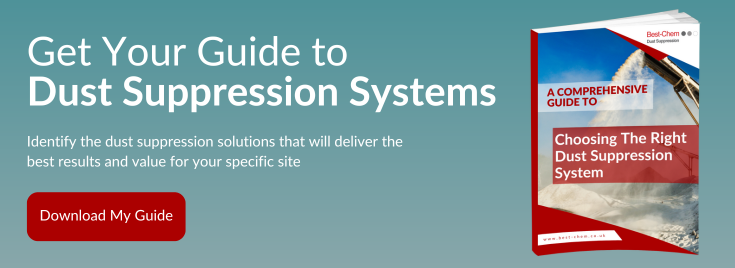
The Role of Site Surveys in Selecting Dust Suppression Methods
Dust doesn’t behave consistently across a mining site, so why treat it with a one-size-fits-all solution? From fast-moving conveyor systems to exposed haul roads and loading zones, each area produces dust with unique characteristics and volumes, requiring tailored, site specific solutions. Effective mining dust control requires more than just selecting the right suppression system; it demands a clear understanding of where, how, and why to deploy it.
In this article, we’ll consider how a site survey can help you to choose the best dust suppression method for your site.

Why Site Surveys Are Essential For Effective Dust Control In Mining…
In mining operations where dust control is a priority, site surveys are a crucial step towards improving industrial safety. By identifying the exact sources of dust and analysing site specific factors, such as airflow, moisture levels, and material type, a detailed survey provides the data needed to engineer targeted suppression strategies. Without a survey, even the most advanced dust suppression methods can underperform or simply shift the problem to other areas of the site
.…and The Value Of A Tailored Approach
A tailored approach to dust control can mean the difference between compliance and violation. Regulatory bodies like the Health and Safety Executive (HSE) require more than the presence of dust suppression systems: they must be proven to be effective. A thorough site survey provides documented evidence that dust risks have been properly assessed, emission points identified, and control measures matched to specific site conditions. This process supports compliance with environmental permits and occupational health standards, helping to reduce exposure to respirable crystalline silica and the primary risk of silicosis.
Custom Solutions Start With Site Specific Insight
A one-size-fits-all approach to workplace safety will likely fall short in dusty environments. Site surveys facilitate the selection and integration of tailored technologies such as foam spray systems for crushers. These systems use less water than traditional methods, creating a larger surface area to capture dust with a low moisture content. Other solutions include misting systems at transfer points, or chemical stabilisers on haul roads. Effective dust control depends on a comprehensive understanding of the mechanical processes and environmental factors that drive dust emissions.
Surveys also play a key role in long-term dust control planning. Dust suppression systems are not a set-and-forget solution; instead, ongoing monitoring and maintenance are essential to ensure consistent performance. As site activity, weather conditions, or material handling processes change, systems must be adjusted to remain effective and compliant.
Find Out More
For more information on effective dust suppression strategies and to learn how a site survey can benefit your operations, contact us today on 01530 272922 or send us a message.
